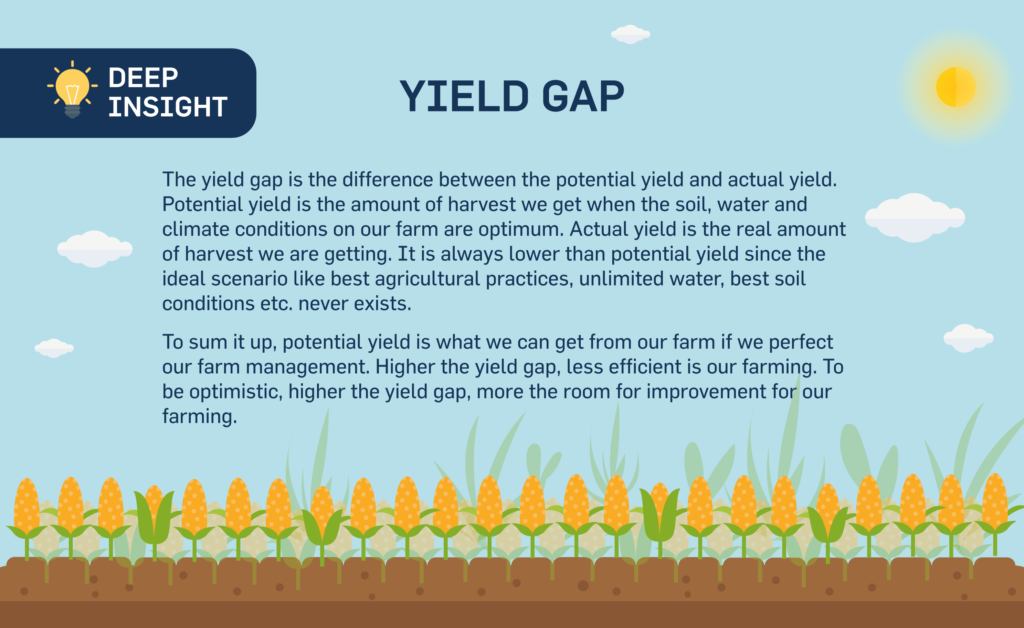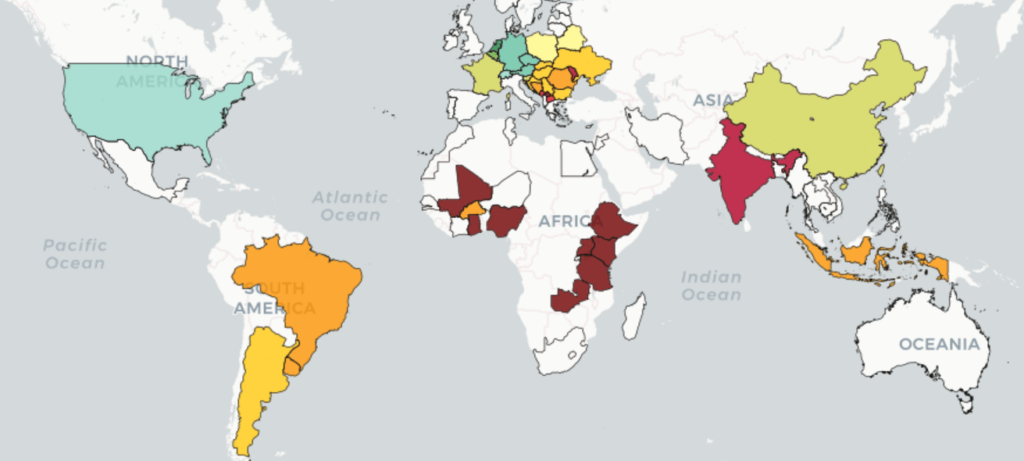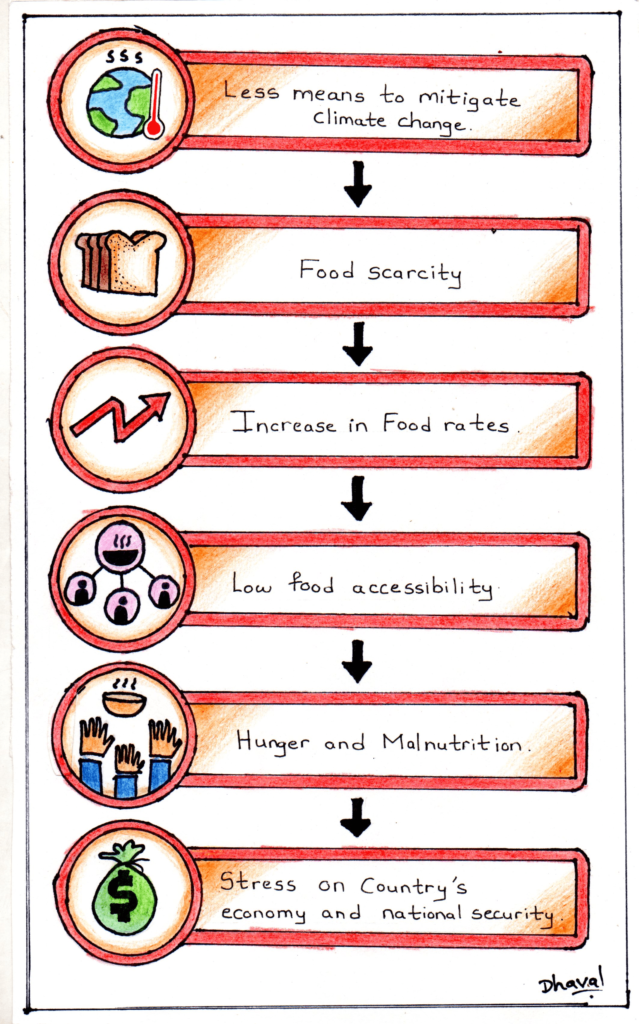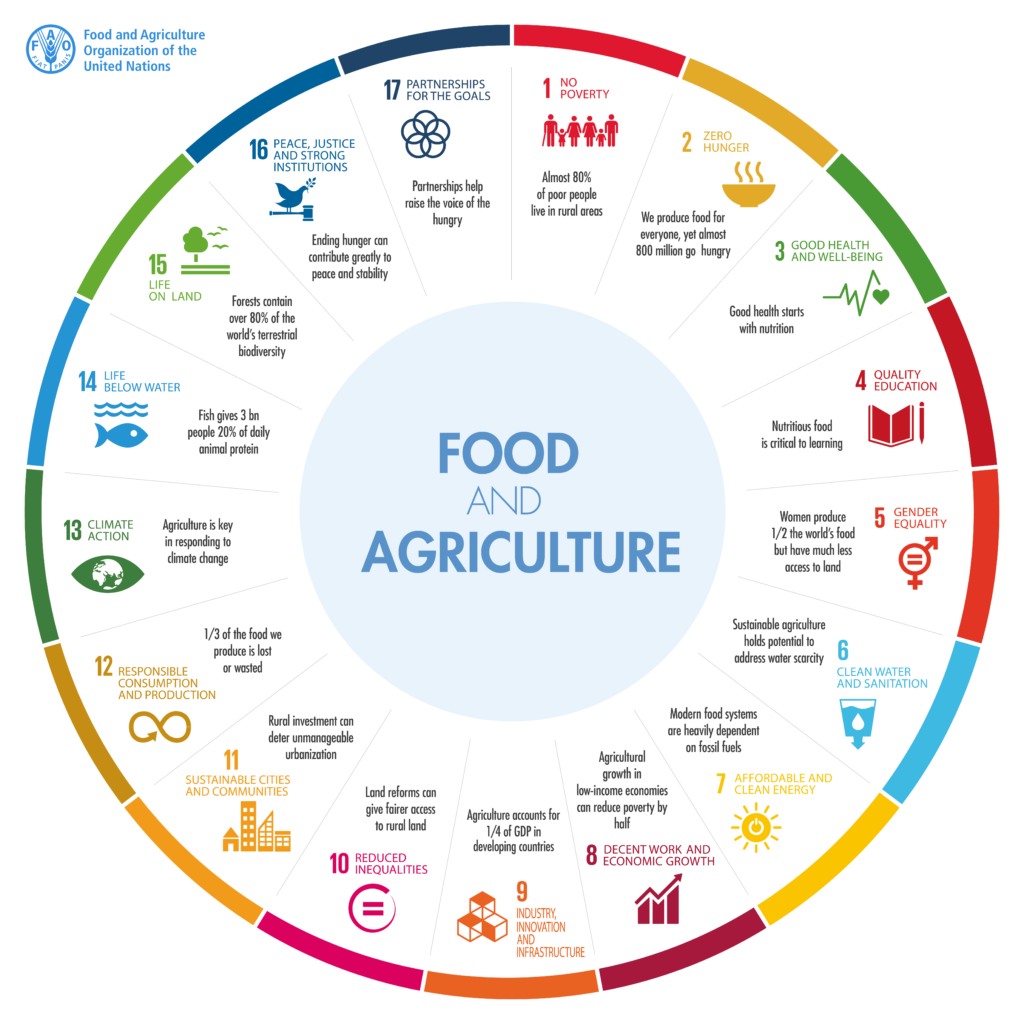In my previous articles, we explored how agriculture evolved over the years, how new innovations helped our civilization grow, and also the food scarcity we are facing today which in coming years will only intensify due to ever increasing population and climate change. In my fourth and last article of this series, let’s explore the complexity of this issue. In my previous articles, I was assuming one fact: – Climate change, land degradation, population explosion, etc. will intensify the food scarcity and affect us (the humanity) equally. In reality, the impact is complex and variable. Let’s go back to the past to understand this.
Green Revolution was successful in many Asian and Latin American countries. The crop varieties were well suited to the soil and climate. Due to the history of colonization in those countries and good existing governing systems, it was easier to implement the changes Green Revolution put forth. For example, India’s railway system (from British Era) and other transportation infrastructure helped create a market net for farming industry, which helped the cause of the revolution. On the other hand, Green Revolution couldn’t kick- start in African countries. Poor soil and very variable climate made it difficult to implement the changes. Africa lacked good infrastructure, good governing systems, and network of farmers and companies. Till today, immense efforts are being made to improve the agricultural systems in Africa. Already being behind in the curve, Africa is more vulnerable to the devastating effects of climate change on its agriculture. Though, by 2050, European and American population growth will plateau, but Africa’s population will be increasing exponentially. For example, it is projected that by 2050, Nigeria will become the third most populous country in the World. By 2050, Africa’s population will be almost double of what it is today.
To assess the situation on ground level, let’s talk about Yield Gap.


Fig 1: Yield gap for maize. Source: yieldgap.org
In the map you see many red patches in African countries. This means that yield gap in African countries is the highest i.e., their agriculture is not efficient. You can see conditions in the Asia and Latin America aren’t great either. Agriculture in North America and Western Europe seems the most efficient (all this of course is with respect to maize as an example). This variability in the yield gap reflects to what we discussed in my last agriculture. We see high-income countries using advanced technology and better management in their fields to improve their yield.
To sum it up, low-income countries with high population growth have high yield gaps and they are most vulnerable to Hunger and climate change. Most of these countries lie in Africa. For now, we only see the tip of the problem. If not resolved in time, it will trigger a cascade of global issues. For instance, a low-income country with high population will have less means to mitigate climate change. It doesn’t have means like high income countries to mitigate food scarcity (importing, using high-tech farming). This will trigger a food crisis in that particular nation. Low food availability will increase food rates. Given major population earns very low salary, food access becomes less and the consumers are robbed of the purchase power due to increase in food rates. Low food access leads to hunger and malnutrition which in long term affect the health and well-being of the population. Any major crisis leads to refugee crisis which puts stress on other major country’s economic and national security. It’s like a domino effect and it all starts from not mitigating climate change. Here’s an illustration to explain you that:


Author

Rohit Pawar
Rohit is an ecologist who recently graduated with a bachelor’s degree in Biosciences from Savitribai Phule Pune University. He wishes to devote his life to ecosystem conservation. In his free time, he worries and overthinks about the biggest problems in the world, especially climate change. He thinks that we are 4 Elon Musks away from saving this planet.
Illustrator

Dhaval Shejwal
Dhaval is currently pursuing his bachelors in Microbiology. Both science and art are his passions. Creativity keeps him going. Scientific data visualization and communication have become the need of time and necessity, as well to break the wall between a lab and home. According to him, “Art is a beautiful reflection of Science, there is art in science and science in art”.
